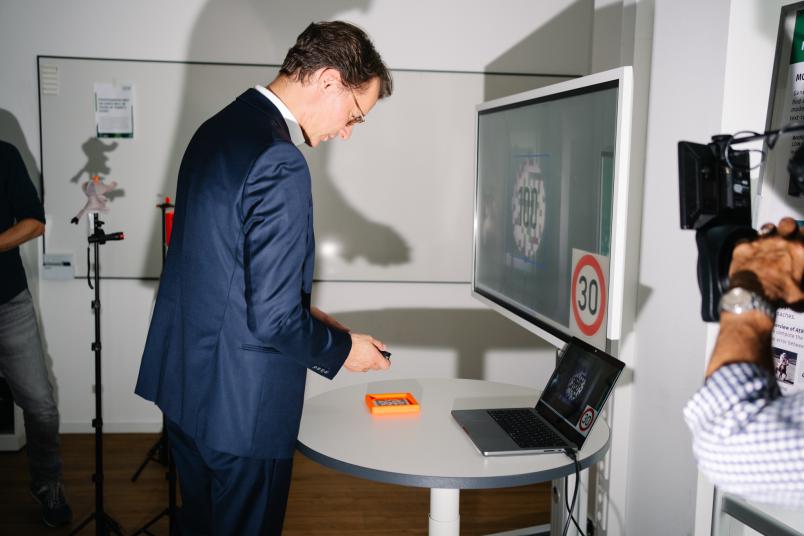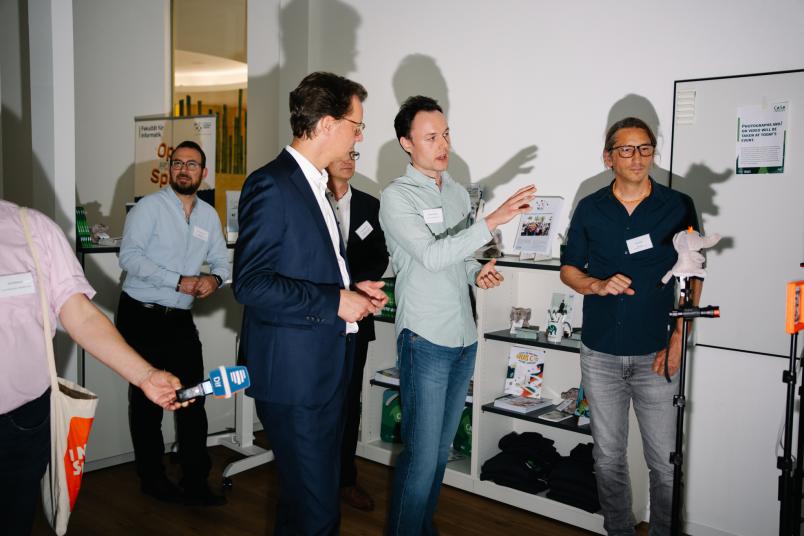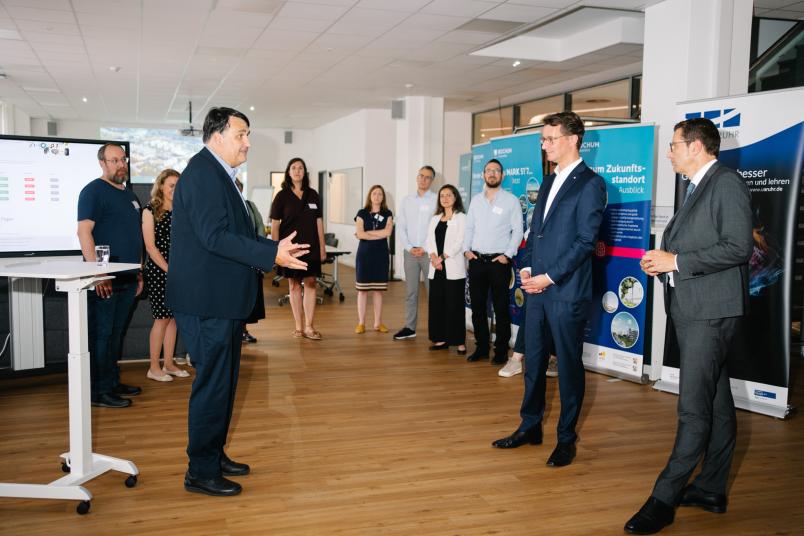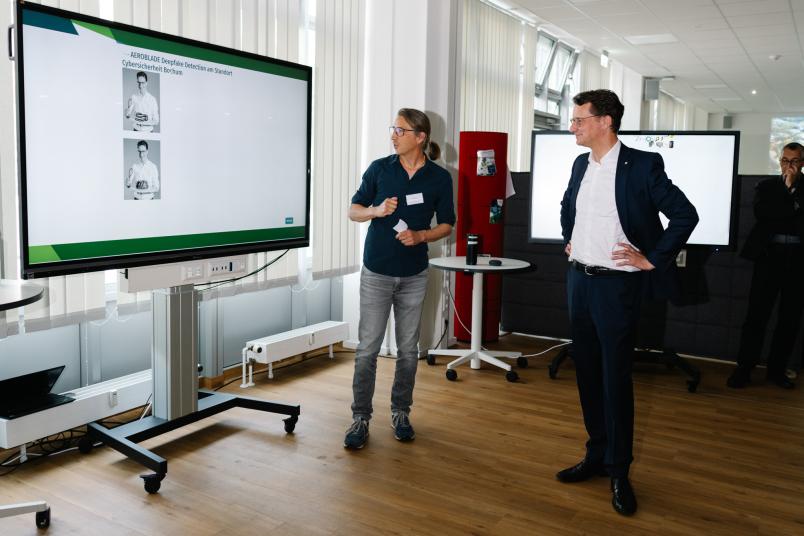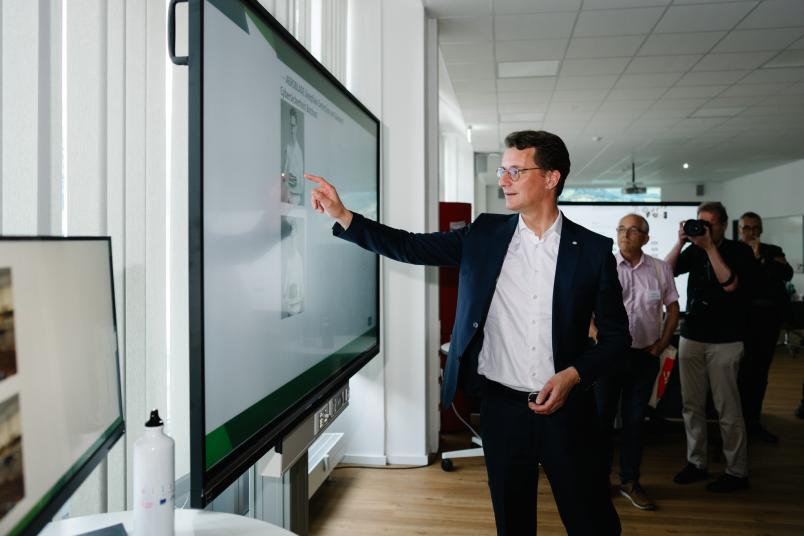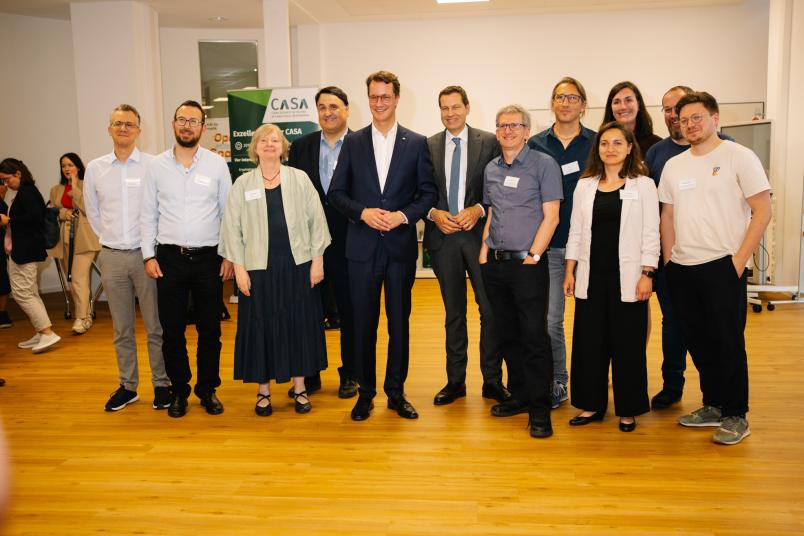
Minister President Wüst Visits Bochum A Global Leader in IT Security
"Over the past 20 years, Bochum has evolved into a hotspot for IT security research," said Wüst during his visit.
During his visit, Minister President Wüst explored cutting-edge projects such as a new method for detecting deepfakes and modern vehicles capable of distinguishing manipulated traffic signs from real ones. At Ruhr University, Wüst engaged directly with researchers, gaining firsthand insights into one of the world's leading hubs for cybersecurity research.
A Hotspot for IT Security Research
"Over the past 20 years, Bochum has evolved into a hotspot for IT security research," said Wüst. "Exceptional research, outstanding support for young talent, and excellent local networking are the strengths of Bochum's IT security sector. Bochum's research contributes to making information technologies more secure - benefitting us all in the age of AI and quantum technologies. The IT security hub in Bochum rightly emphasizes effective transfer from science to practice—a thriving ecosystem for startups is a catalyst for positive structural change."
A Connected Hub
The foundation of this success is the Horst Görtz Institute for IT Security (HGI) at Ruhr University Bochum, established in 2003, and home to the Cluster of Excellence CASA (Cyber Security in the Age of Large-Scale Adversaries) since 2019. Also founded in 2019, the Max Planck Institute for Security and Privacy (MPI-SP) is another key player. In 2021, the Research Center Trustworthy Data Science and Security was launched within the Research Alliance Ruhr, supported by the NRW state and stemming from the Ruhr Conference. Researchers from the region's three major universities collaborate here, crossing institutional boundaries.
Europe's Largest Study Location for IT Security
The Minister President discussed cybersecurity, particularly the opportunities and risks of artificial intelligence, with Bochum scientists. He was welcomed by Rector Professor Martin Paul, in the presence of Bochum’s Mayor Thomas Eiskirch. Prof. Paul highlighted, "Ruhr University Bochum is now the largest study location for IT security in Europe. Our researchers develop effective solutions against powerful cyber attackers. HGI and its Cluster of Excellence CASA stand out for their international excellence, interdisciplinary research, innovative approaches, and successful spin-offs, ensuring knowledge transfer into practice. We are committed to keeping Bochum at the forefront of global cybersecurity."
Key statistics include:
- More than 900 students are currently being educated in four degree programs - experts who are urgently needed and the highly sought-after specialists of tomorrow.
- From two endowed professorships 20 years ago, the institute has grown to 41 professorships. Researchers here are involved in third-party funded projects totaling over 50 million euros.
- Three out of four international cryptography standards for future quantum computing generations originate from Bochum (based on international NIST standards, comparable to Germany’s DIN).
Hands-On Research Demonstrations
Minister President Wüst also participated in live demonstrations, gaining concrete insights into current research:
Deepfake Detection - Professor Asja Fischer
